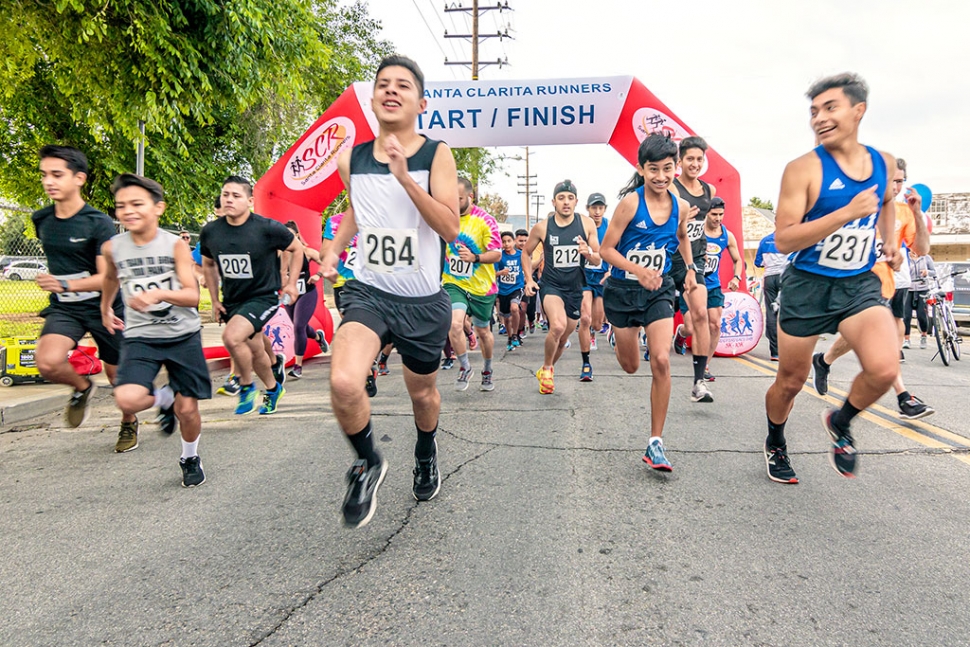|
Focus on Photography
 Photo of the Week: "Start of the Rotary Club 5K-10K & Fitness Walk race" by Bob Crum. Photo data: Canon 7DMKII camera, manual mode, Tokina 11-16mm @13mm. Exposure: ISO 320, aperture f/11, 1/200th second shutter speed. By Bob Crum — Wednesday, May 22nd, 2019
Nothing ventured-nothing gained!
 Bob Crum The following contains a tech tip and a modicum of dismay. The technical is blur redux. The dismay relates to curmudgeonly phonetographers taking me to task. Last week's column motivated two cantankerous phonetographers to write. Henry K. opined that my carnival "sunstar" photos were showing off. Henry! Yes, I do enjoy incorporating the sunstar effect when presented the opportunity. Not particularly easy to accomplish, but when I succeed, I believe it adds image impact. Sunstars also illustrate creative options of traditional cameras and difficult to get with cellphones except by accident. Is that showing off? OK, I'm guilty. He also dared say that my ego is bigger than the Ferris Wheel. Phonetographer Jay W. wrote to correct me, telling me that what I call a cellphone is a smartphone. Wait just a minute, Jay W. My digital device that you call a smartphone makes & receives phone calls via cell towers. Sends & receives texts via cell towers. Streams videos via cell towers. Since it can't do any of that without cell towers, I maintain that it's a cellphone and not a smartphone. BTW, if it were smart, it would know better than to "drop" calls. If it were smart, it would know that I don't need a telemarketer calling to tell me that beautiful Russian women are eager to become American brides. A smartphone would know I don't marry spies! So you see, Jay W., since it's useless without cell towers, it's a cellphone! Now the technical: Blur. In my previous column, I mentioned that when shooting a fast-moving ride, blur to illustrate motions is created by merely decreasing the shutter speed. However, I didn't mention that another interesting effect is obtained with a faster shutter speed and pan with the moving subject, i.e., follow the moving object. This technique blurs the background keeping the subject sharp. What if you get blur but don't want it. First, consider cutting back on strawberry margaritas. Also, a tripod restricts camera movement and reduces blur. Another remedy is to increase the shutter speed. Also, proper camera hand-holding technique can make a difference. Tuck in your elbows and support the lens from underneath with the free hand. And don't sneeze when pressing the shutter button! Sometimes I can play with a type of blur creatively by varying lens aperture. When I open the lens, I can (depending on the lens) blur a distracting background. Bidda-bing, bidda-boom... bokeh! Bokeh means background out-of-focus (blurry). Conversely, to have everything from front to back in focus, increase the depth-of-field by closing the lens aperture. Composition can make or break a photo. As a world renowned photojournalist, well, at least known wildly, er, widely, around Fillmore, experience teaches how to compose for an interesting photo. Example: Like other photographers, I shot parades, marathon runners, bicycle races, etc., from the sidelines. Boooooring. So, last year I photographed the start of the Rotary Club's 5K-10K race from the middle of the road. I was almost run over but nothing venture-nothing gained. But shooting from the middle of the road with a herd of runners rushing at me is exhilarating. So, guess what? OF COURSE, I again shot from the middle of the road while spectators yelled: BOB, get out of the way! Again I was almost run over. Survival is sweet! This year I used a Tokina ultra-wide 11-16mm lens. Do you think the reward is worth the risk? Photo of the week: Start of the 5K-10K race. Notice a little blur as fast runners passed by me? Send comments, questions or suggestions to: focusonphotography@earthlink.net |
